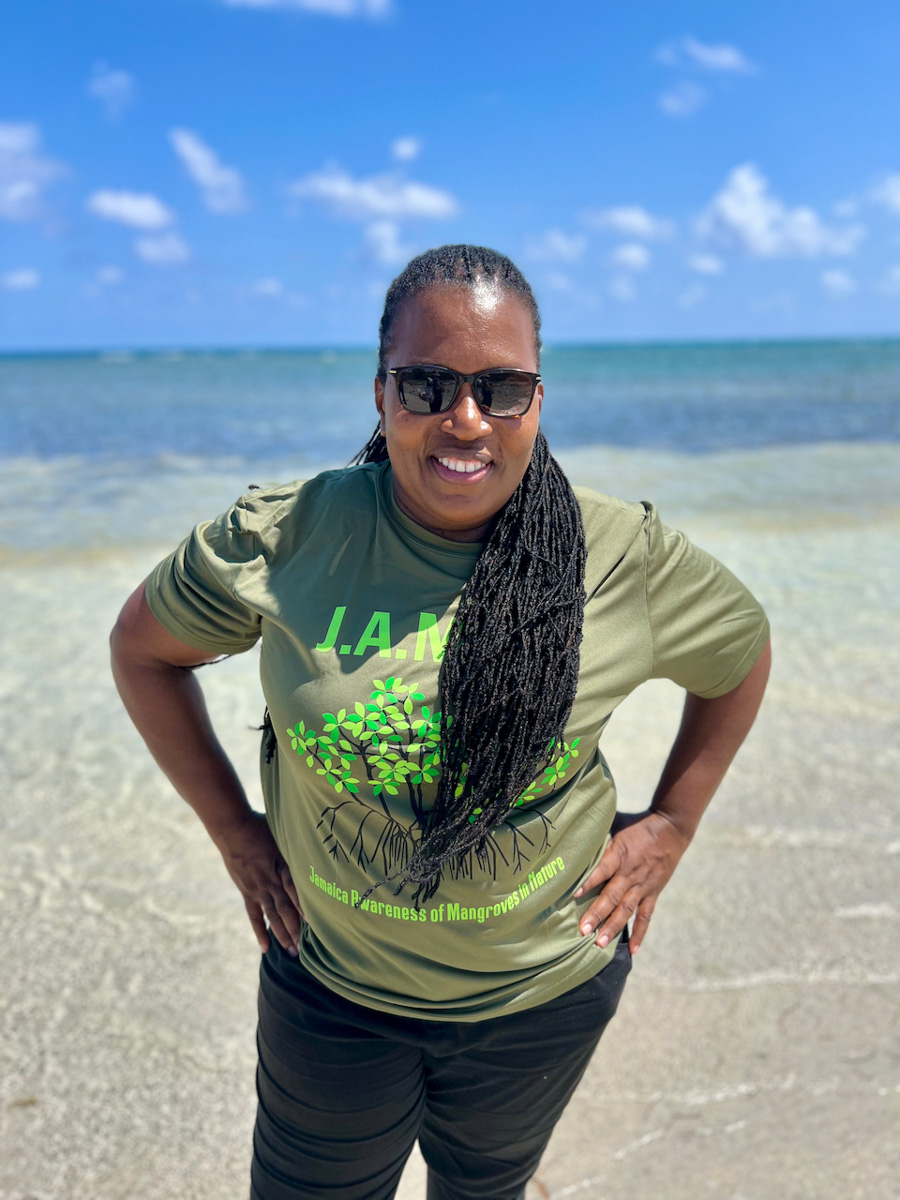
For 25 years, one dedicated educator has taught Biology at William Knibb Memorial High School in Jamaica, rising through the ranks to become Head of the Science Department: Ms. Fulvia Nugent. Over the past decade, she has been deeply involved in the Jamaica Awareness of Mangroves in Nature (J.A.M.I.N.) program. We spoke with her about how J.A.M.I.N. has impacted teaching, learning, and conservation awareness among her students.
Q: You’ve spent decades in the classroom. How does J.A.M.I.N. compare to other teaching experiences you’ve had?
A: Without a doubt, J.A.M.I.N. is the most transformative program I’ve encountered in my entire teaching career. Since 2014, it has brought unmatched support, collaboration, motivation, and sponsorship to the Biology classroom. While STEM and STEAM education were introduced in 2014, we lacked the resources to make those concepts come alive for our students. J.A.M.I.N. changed everything. Thanks to the commitment of the Khaled bin Sultan Living Oceans Foundation, Playa Hotels & Resorts, and Discovery Bay Marine Lab at the University of the West Indies, we gained access to a world of opportunity that had previously been out of reach. This program brought science education out of the textbook and into the real world.
Q: What makes the J.A.M.I.N. program such a powerful learning experience for your students?
A: J.A.M.I.N. captures students’ interest from the very beginning because it is rooted in real-world, project-based and place-based learning. Students are actively involved in restoring, protecting, and conserving their local mangrove forests—not just as observers, but as contributors. Each student is responsible for caring for their own mangrove propagule, watering and measuring its growth over an extended period. This sense of ownership encourages a deeper connection to the environment and a strong sense of responsibility.
The program challenges students to think critically and solve problems using scientific methods. It builds skills that are directly applied in their School-Based Assessments, where they design and conduct their own experiments—from identifying a research problem and forming a hypothesis, to gathering data, analyzing results, and presenting findings. The experience helps them grow not only academically but personally, as they gain confidence working with peers and engaging with professionals from diverse backgrounds. Over time, the program has fundamentally improved how students approach science and has elevated the quality of their lab work.
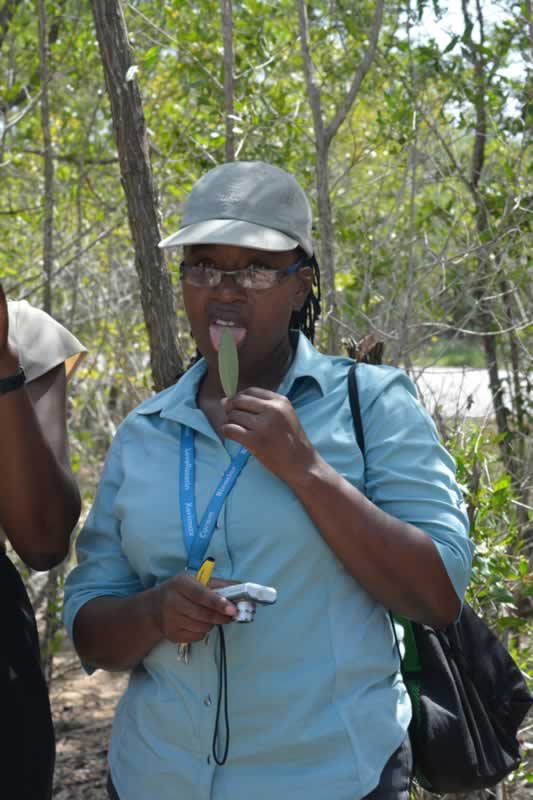
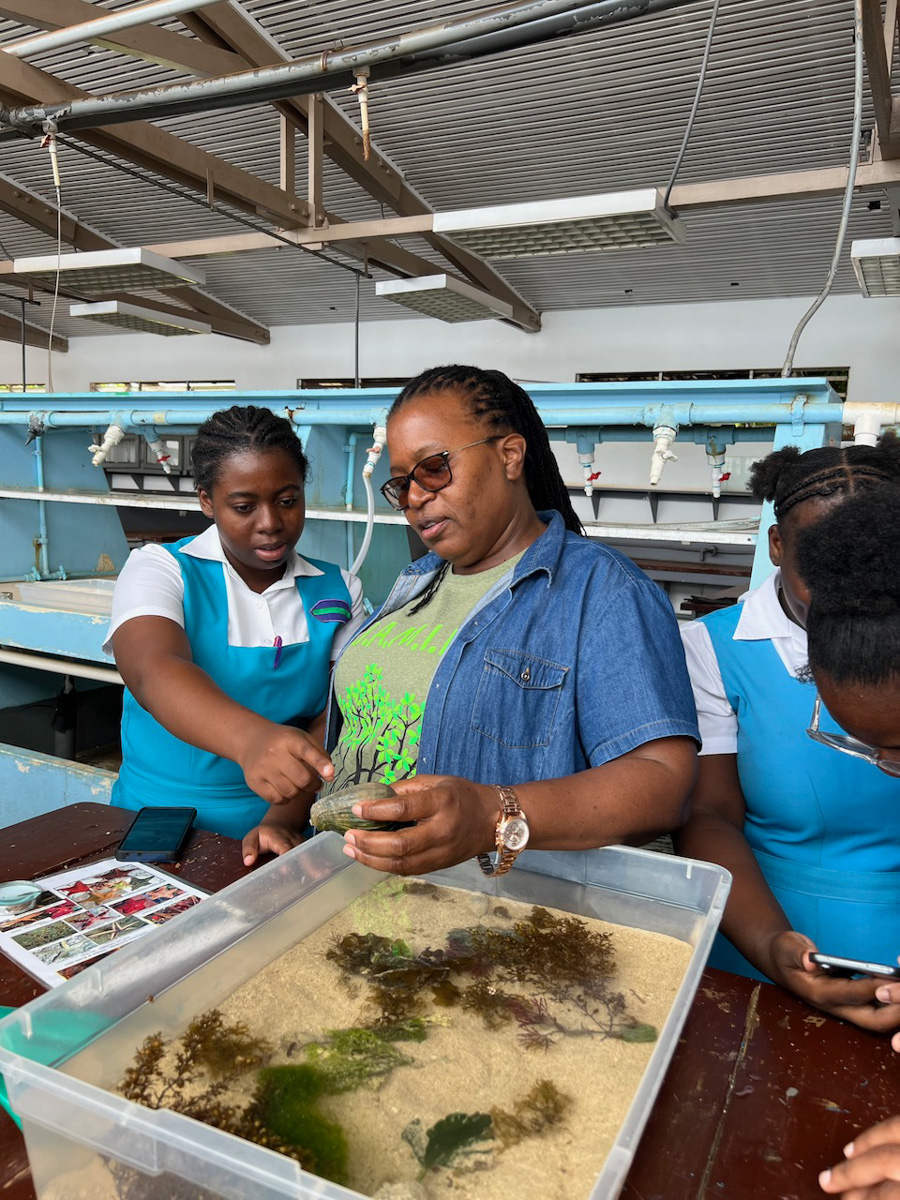
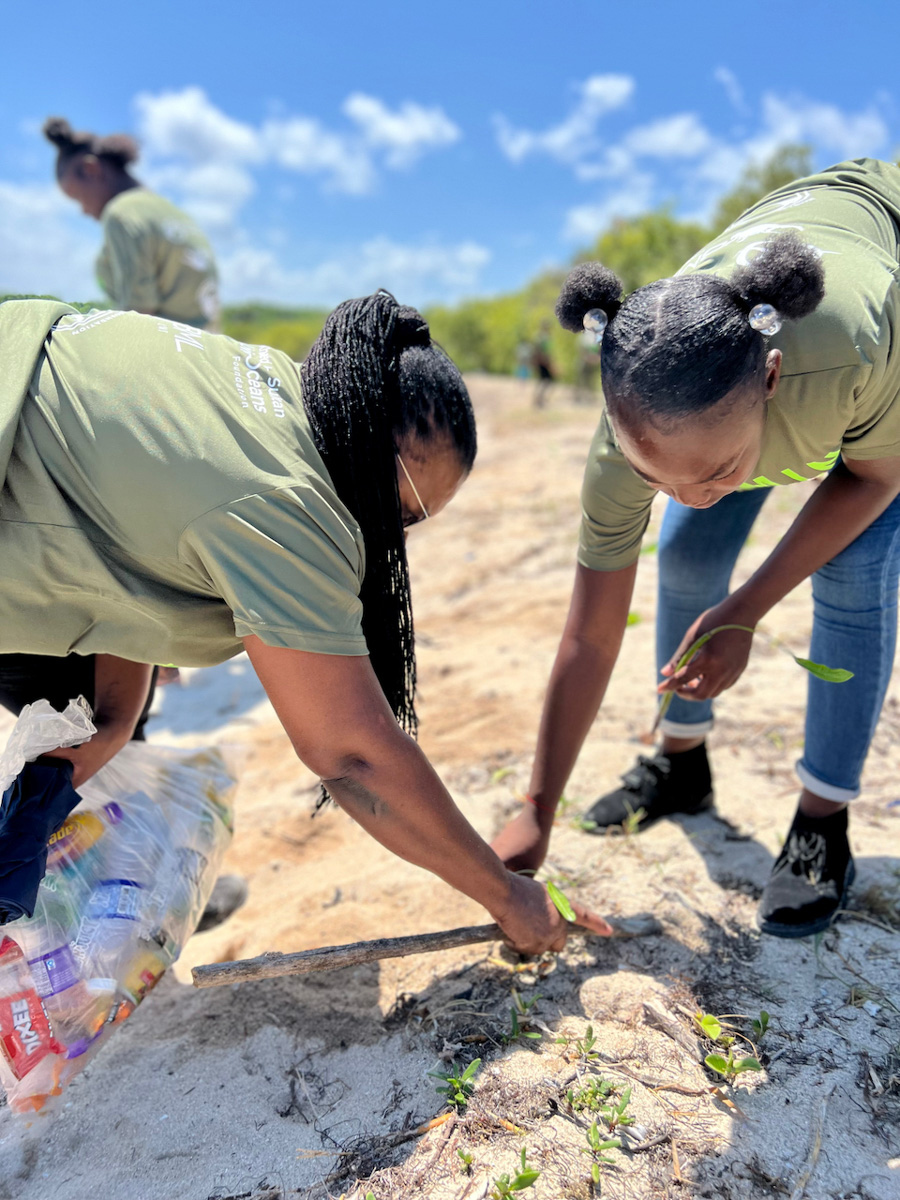
Q: You’ve been part of J.A.M.I.N. since the beginning. What are some of the standout moments you’ve witnessed among your students?
A: There are so many moments that stand out. I remember that before J.A.M.I.N., simply talking about STEM and STEAM education wasn’t enough to excite the students. As teachers, we had some training in those areas, but we lacked the tools and support to truly implement them. J.A.M.I.N. filled that gap. Students became energized, motivated, and genuinely enthusiastic about participating in science.
I noticed changes in how they worked together—they became more respectful, more civil, and more accountable for their roles in the project. They even initiated acts of appreciation to our sponsors on their own, without any suggestion from us. For many of them, J.A.M.I.N. sparked a sense of maturity and ownership.
One lighter moment that has stuck with me is when a student got stuck in the mangrove mud because her shoes wouldn’t come out. Her classmates came together, laughing but determined, to help pull her out. It was a beautiful example of teamwork and the kind of shared experience that stays with you.
Another memorable story is about a student who became fascinated with the drones used during one of our activities. He was so inspired that he saved up money to buy his own drone and later used it to record a walkthrough of the mangrove forest. That kind of self-motivation is something I hadn’t seen before at that level.
Q: Have you seen a shift in how students understand and value mangrove forests since joining J.A.M.I.N.?
A: Absolutely. Before joining the program, students had very little understanding of mangroves. Many of them complained about the odor, especially after rain. They were disturbed by the burning of mangroves for coal and viewed these areas as places where people dumped garbage. There was a sense of detachment—mangroves were seen as unpleasant and irrelevant.
J.A.M.I.N. completely shifted their perception. Students now understand the ecological importance of mangrove forests and speak knowledgeably about their role in protecting coastlines, supporting biodiversity, and mitigating climate change. They’ve become confident advocates, willing to educate others and push for preservation. The tours and hands-on experiences made a lasting impression. Questions they had were answered, their concerns were addressed, and the scientific knowledge they gained empowered them to view mangroves not as swamps to be ignored, but as treasures to be protected.
Q: How do hands-on activities like growing and planting mangroves compare to traditional science lessons in the classroom?
A: Hands-on learning has a much deeper impact. Growing and planting their own mangroves gave students a sense of pride and purpose. Even basic scientific skills—like using a ruler to measure growth—were strengthened through this direct engagement. These weren’t just abstract lessons on a page; they were real, tangible experiences tied to the students’ own actions and efforts.
Traditional classroom learning can feel disconnected and hard to relate to, especially when teaching about ecosystems that students don’t see or understand firsthand. But with J.A.M.I.N., students could feel the mud beneath their feet, measure the growth of their own trees, and witness the effect of conservation efforts right in their communities. That kind of experiential learning sticks with them in ways that textbooks never could. As a result, we’ve started integrating more labs connected to mangrove ecosystems into our regular curriculum to keep the learning relevant and grounded.
Q: What advice would you give to other teachers who want to inspire their students to care for the environment?
A: I would tell them to look to J.A.M.I.N. as a model. It’s an example of how education, when rooted in real-world issues and meaningful experiences, can truly inspire students. Teachers should try to connect their lessons to projects that involve observation, inquiry, and problem-solving related to the environment. School-Based Assessments can become opportunities for real-world science.
I also believe in involving professionals, community partners, and higher learning institutions. When students see scientists, hotel staff, and university researchers working together, they understand the value of collaboration in protecting our natural resources. Most importantly, all subject areas, not just science, should find ways to connect with conservation. The environment is something we all share responsibility for, and it should be a unifying theme in education. With full student participation and cross-disciplinary cooperation, we can nurture a generation that truly cares for the planet.
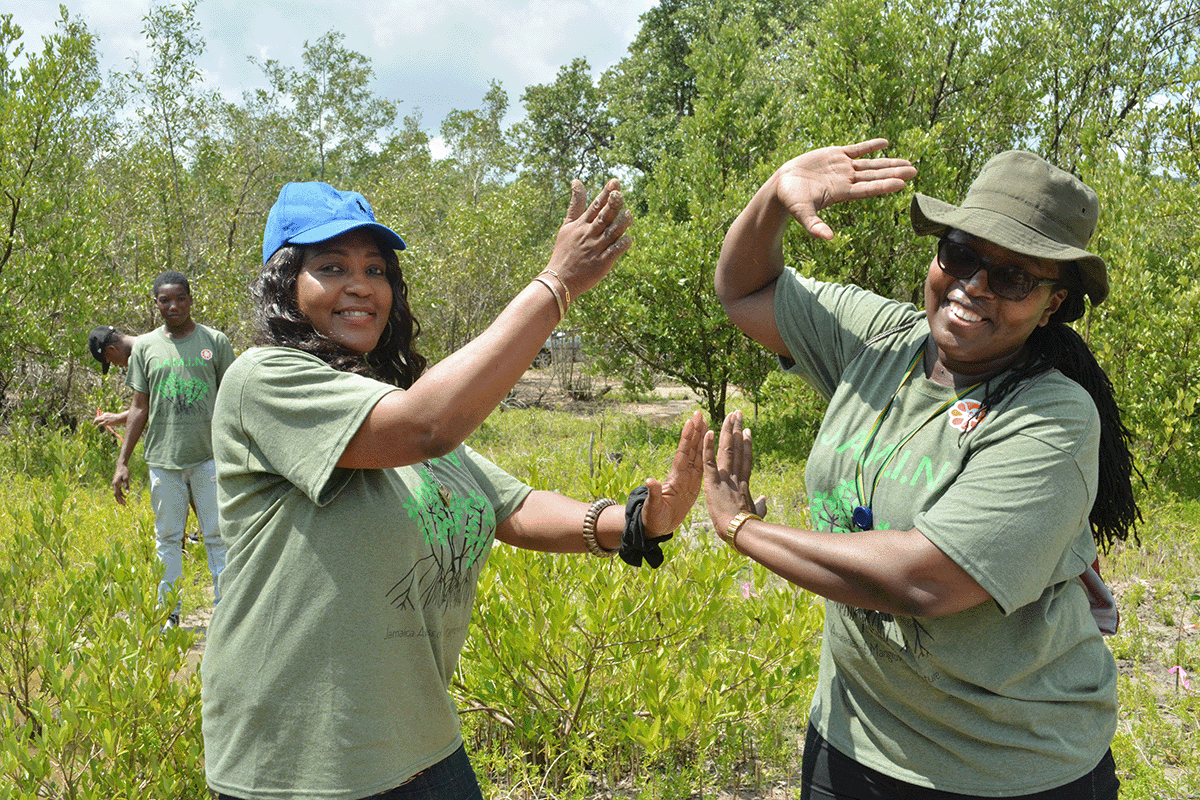
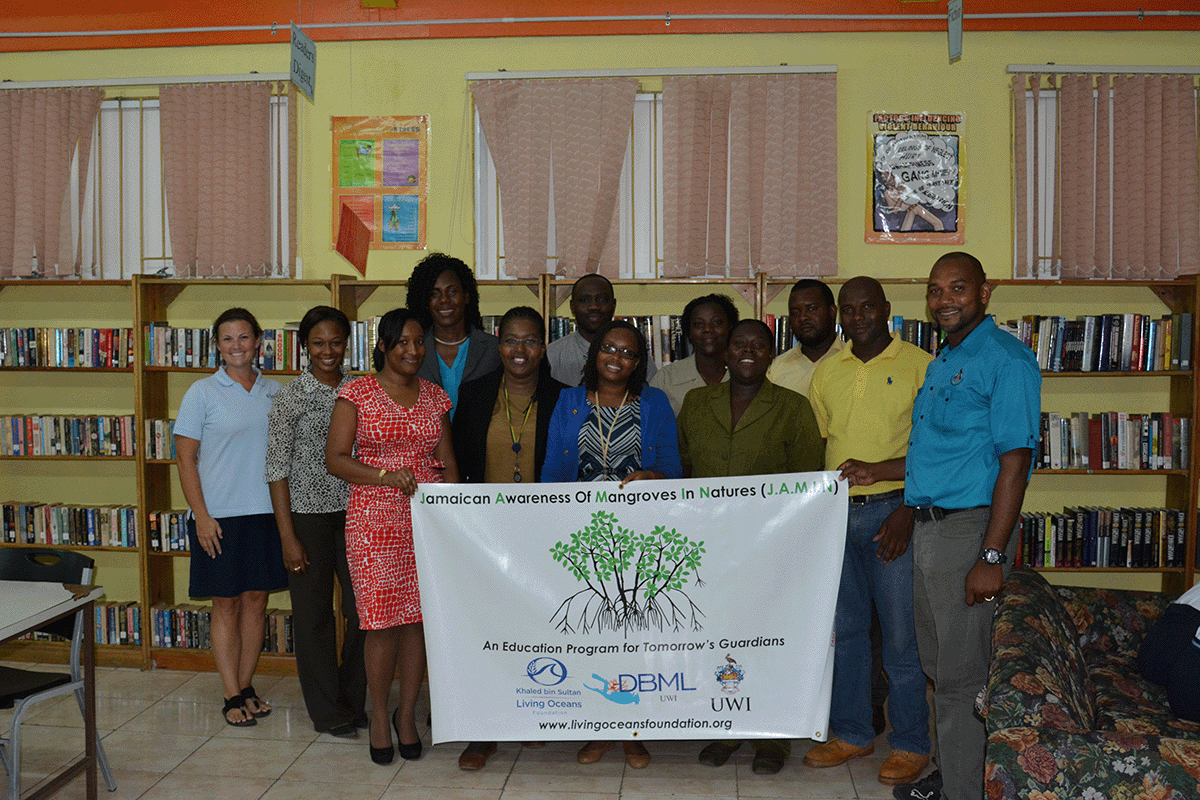
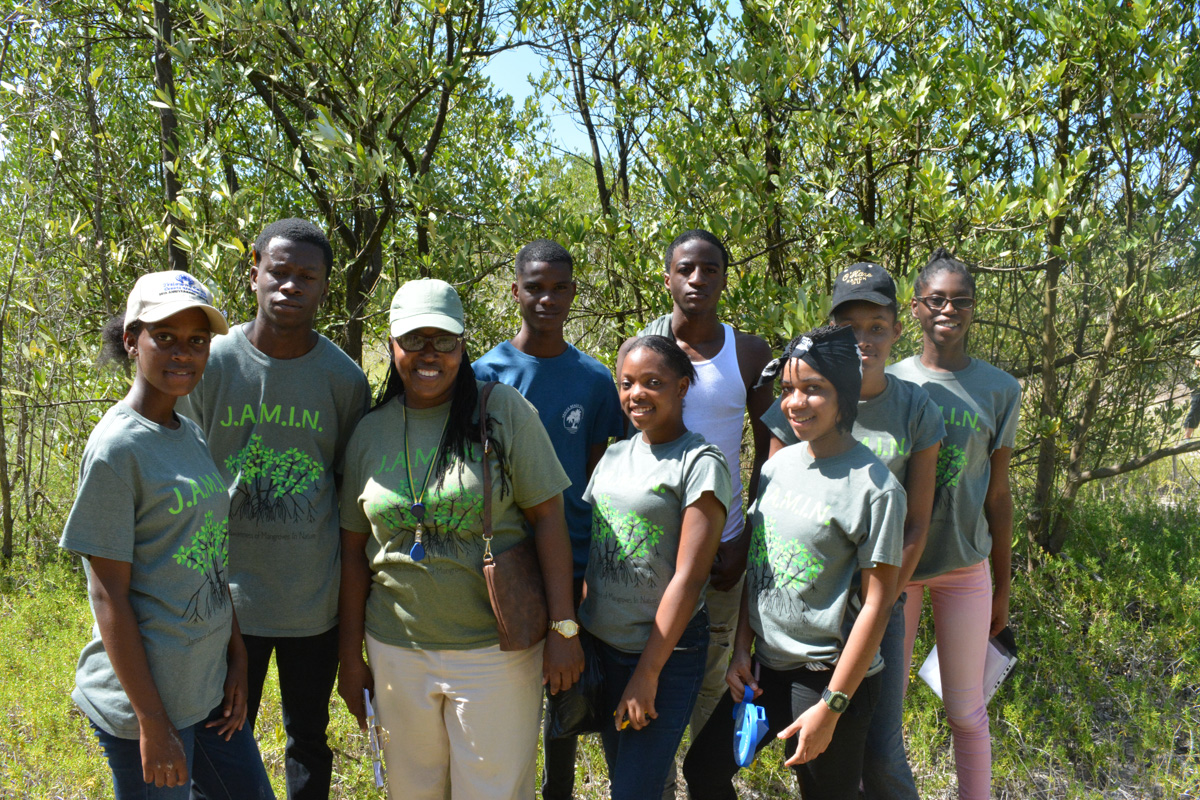
Final Thoughts
The J.A.M.I.N. program has not only changed how we teach Biology at William Knibb Memorial High School—it has transformed how students think, feel, and act toward their environment. After ten years, I can say with confidence that it has created a lasting legacy of awareness, responsibility, and hope for the future.

Mangrove Education & Restoration
The Khaled bin Sultan Living Oceans Foundation’s Jamaican Awareness of Mangroves in Nature (J.A.M.I.N.) and Bahamas Awareness of Mangroves (B.A.M.) programs teach students about mangrove ecosystems through classroom lessons, hands-on experiments, and field-based restoration, inspiring the next generation of environmental stewards.


